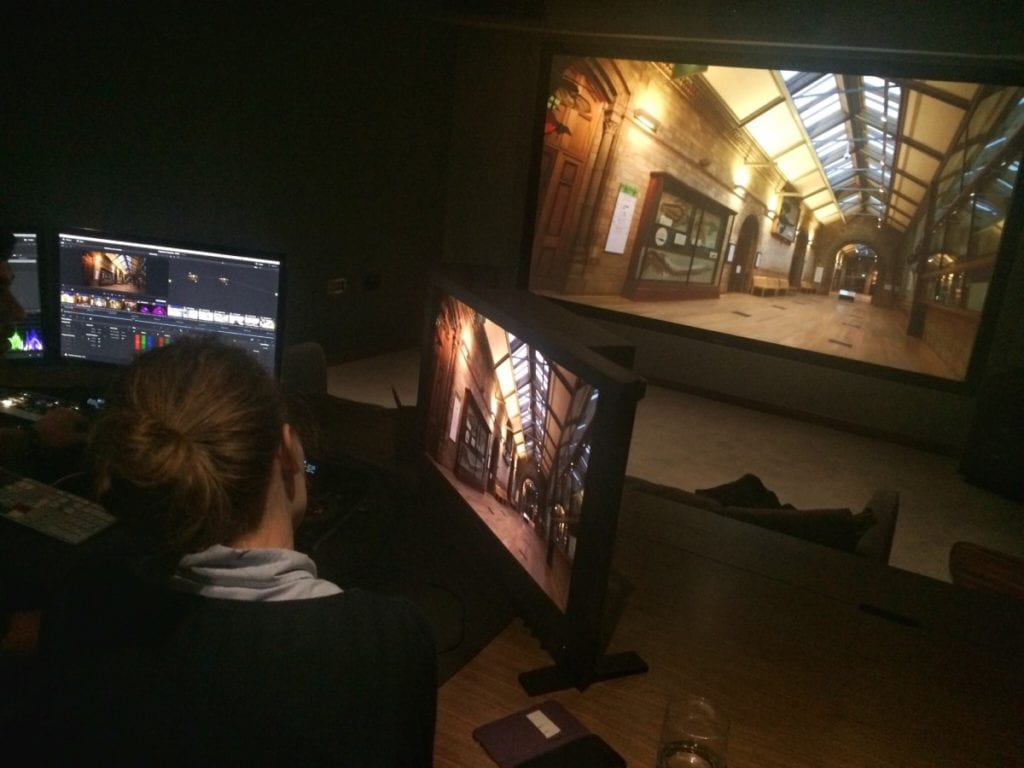Today Alison graded the venue hire video we’re making for the Natural History Museum. We shot the film over a series of shooting days, when different kinds of events were taking place. We then edited it all down into a 2 minute film. One of the final stages when the film is signed off is to get a picture grade done on the footage.
What is a Picture Grade?
A picture grade is where you use specialist software like Da Vinci to even out footage shot at different times, or with different lighting, to make it more even. You can also use it to accentuate the footage, such as to make dark areas really dark. It’s also possible to fix footage.
We worked at Coda Post Production, where the image is projected on to a large screen. It’s great to see your footage up there.

What is the grading process?
Film grading, also known as colour grading or colour correction, is a series of technical adjustments made to enhance the visual aesthetics of your film. The raw footage is imported and organised, then a primary colour corrections establish a baseline for the film. Colourists then meticulously fine-tune parameters such as exposure, contrast, saturation, and colour balance, ensuring consistency throughout.
Additionally, they can work on isolating specific elements or correct particular areas of the frame. This process involves using masks or keying to isolate colours, allowing for precise adjustments. The grading also involves managing highlights and shadows, achieving a desired mood or atmosphere. It also ensured the overall colour palette aligns with the creative vision. Advanced tools and software like DaVinci offer an array of features to craft the visual tone and style of the film. The result is a visually captivating and cohesive film that aligns with the director’s artistic intent and enhances the audience’s viewing experience.
